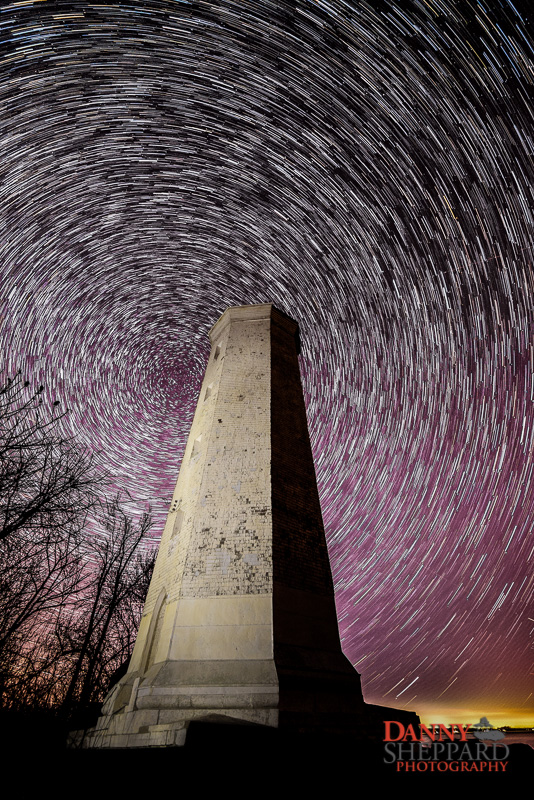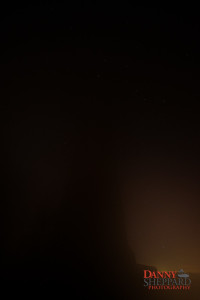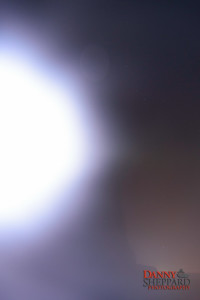What I Learned From My First Time Shooting Star Trails
One of my favourite photography subjects lately has been the night sky. Like many others, I find myself mesmerized by the endlessness of the stars, and using the camera to capture things the naked eye can’t see just makes it even more fantastic. But, capturing the stars also comes with it’s own set of unique challenges. This was not my first time photographing the night sky, but it was my first attempt at capturing star trails and I found out the hard way that there are some additional challenges when you’re doing more than capturing a static night sky photo. It was an interesting night and here’s what I learned from my first time shooting star trails.
Know Your Gear
Know your gear. That’s a no brainer right? Well, I thought so too until I was out in the dark in the middle of the night fumbling with a function that I thought I knew how to use. One very cool feature of my Nikon cameras is the built in intervalometer. However, I hadn’t really ever used it for real. I had played with it on several occasions quite a while ago and it seemed straightforward enough, so I never gave it a second thought before heading out.
So there I was in the dark (and cold) setting up my tripod, doing test shots, and refining the composition of my shot. Once I was happy, it was time to configure the intervalometer to take my series of photos while I sat back in my chair (I had thought of everything!) and relaxed. I calculated that I’d need 90 frames at 30 seconds each to get the look I was going for, so I dialed in my settings, put the camera back on the tripod, and hit ‘start’. The camera started clicking away happily and I thought I was all set. So, I sat in my chair and pulled out my tablet to read a book. Just then the camera stopped taking pictures. Instead of 90 frames I got 4. Huh? I reset the camera and got 4 more frames. Gah! I’ll save you the rest of the details, and I won’t repeat any of the colourful language I used during the rest of my intervalometer ordeal. But needless to say, I didn’t throw my camera in the lake and I eventually got the settings figured out. By that time I should have been almost done with my shot, but I was just getting started.
Dew Point Shmew Point
Once I was convinced that I had really talked my camera into shooting 90 frames, I sat and relaxed for a bit. I was concerned about condensation on the lens, so I got up to check on things a couple of times, but saw no sign of water. So, I decided to go wander around in the dark (for fear of the light from my headlamp ruin a frame) while I waited. When I got back to my camera about twenty minutes later I took a peek at the lens and noticed it was completely covered in water! In a panic, I grabbed a cloth out of my camera bag and wiped the lens down as best I could, hoping that not too many frames were ruined and that I could get the rest of the frames since the interval was only half done. A few minutes later, I checked and found the lens completely fogged over again and realized there was no way I was going to be able keep the lens clear and still get enough shots.
At that point, I decided to call it a night and stopped the interval. When I scrolled back through the images, I could see the clarity of the scene gradually disappear until everything was a complete blur, followed by a frame with my headlamp in it as I cleaned the lens. I briefly reconsidered throwing my camera in the lake, but instead packed up and headed home.
In the end, I got about half way through the interval before dew started to settle. I’m no big city meteorologist, but it would appear that something triggered the sudden onset of dew. I have some reading to do on this matter!
To Infinity… and In Focus
In order for your camera to focus, it needs something to focus on. That can be a problem when it’s the middle of the night and you’ve done your best to get as far away from any light sources as possible. In order to make sure the stars are in focus, your lens needs to be set to focus to infinity. The problem is that even if your lens has a focus distance display on it, it’s almost guaranteed that turning the ring to the infinity symbol will NOT do the trick. The best way to test this is to go outside (when it’s light out!) and focus on something as far away as possible. That’s all well and good, but doesn’t help when your in the dark right? Well, that’s where the lesson comes in. Get to know where your lens’ infinity focus really is. It’s also a good idea to use some gaffers tape (never duct tape!) to mark where the focus ring should be so it’s easier to deal with in the dark.
In my case, I know my 24-70 lens quite well. But I wasn’t using that lens on this night. I was using a lens which I didn’t know. So I had to double check my focus to make sure it was right in live view. Which also caused some small camera movement, which in turn caused a bit of a headache in post processing. I should have gone out in the day and made sure I knew exactly where the focus needed to be.
Also, make sure your lens is set to manual focus so that your camera doesn’t hunt for focus in the dark for each frame.
If a Photographer Falls Over a Tree, Does Anybody Hear?
So, you’ve dotted all the i’s and crossed all the t’s. Your camera is focused, set on the tripod, and snapping away for… oh, the next hour. What are you going to do with all that spare time? Going for a walk is not a bad idea, but just make sure that you don’t use a flashlight near your camera or subject. Also make that sure your eyes are adjusted to the dark well enough that you don’t walk into obstacles… like oh, I don’t know, a fallen tree on the beach, for example.
Looking Forward To More Clear Skies
Even with all the obstacles I had to overcome (including that tree), I am pretty happy with the resulting photo (special thanks to my wife who suggested the location!). I learned from my mistakes, and picked up a few new tricks, so I’d say it was a good night overall. Now I’m just waiting for some more clear skies so I can do it all again (except the tree thing, that was not fun at all).
The final image was composed of 32 images which were processed using StarStax. I also took one shot of the lighthouse which I illuminated with my flashlight from the left and masked that in to the photo using Photoshop.



